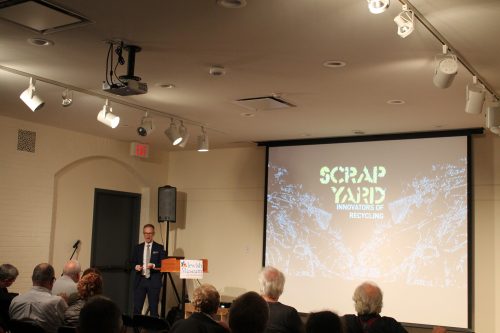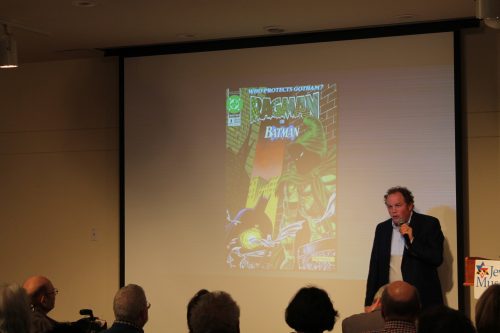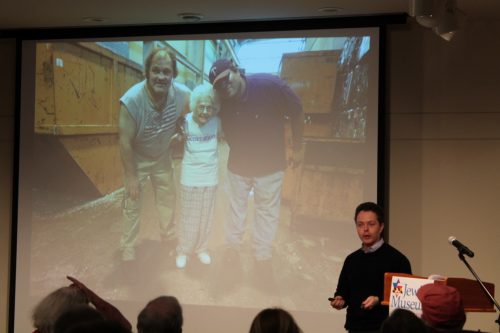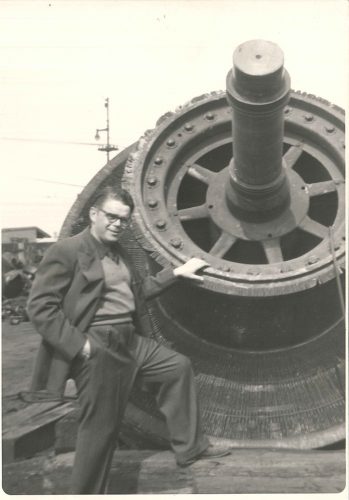Learning at JMM: Scrap Public Programs Recap

Blog post by Program Assistant Laura Grant. To read more posts from Laura, click here.
It is hard to believe that Scrap Yard: Innovators of Recycling has been up for almost a month. In that time, JMM has offered three wonderful public programs that each provided a different perspective on the scrap industry.
On October 27th, we welcomed Zachary Paul Levine, curator of Scrap Yard: Innovators of Recycling, to provide an overview of the exhibition. He explained how the exhibition’s structure mirrors that of a scrap yard. While it may feel overwhelming walking through the space, everything is carefully organized just like in a scrap yard. Levine gave the audience an introduction to the way scrap is processed and to the individuals who complete the hard work. Levine also reminded us that we all have a relationship to the scrap industry whether we realize it or not. (If you missed this talk – great news! Zachary will be doing a repeat on Sunday, January 19th.)

Next, we hosted Dr. Jonathan Pollack to speak about Jewish immigrants in the scrap industry. Dr. Pollack noted that at the turn of the 20th century, about 80 to 90 percent of scrap dealers were Jewish. He explored several reasons Jews entered the scrap industry and offered the insight that scrap recycling was like peddling in reverse. Instead of selling goods, Jewish immigrants picked up people’s scrapped goods. Pollack infused his lecture with a touch of humor by discussing Ragman, a Jewish superhero from DC Comics who derives his powers from a suit of rags.

Most recently, journalist and author Adam Minter joined us to speak about his role covering the scrap industry abroad and his personal connection to the business. Minter grew up in a scrap family in Minneapolis. Although he did not join the business, he joked that he could never escape it. Beginning in the early 2000s, Minter travelled across the world reporting on scrap recycling in emergent economies in places like China, Nigeria, and Ghana. I found it particularly interesting when Minter pointed out the connection between early scrap dealers in the United States and those in other countries today. He noted that both groups have a shared identity as outsiders. Just as Jewish immigrants turned to the industry out of necessity and then made livelihoods out of it, immigrants in emerging economies today join the industry because it is one of the only jobs available to them, but then they grow to create their own businesses. Minter also read a section from his new book Secondhand: Travels of a Global Scrap Man.

I have enjoyed learning about this new topic through our public programs and hearing from individuals about their own connections to the scrap industry.

While you will have to wait a little while for the next Scrap lecture, you will be rewarded for your patience. On January 12th, Marvin Pinkert, JMM Executive Director, will speak about his personal connection to the scrap industry. Come learn how both sides of his family are connected to scrap and why so many members of his generation decided not to join the business. Tickets are available here.
You can always check out our full line up of public programs here on our website or on our Facebook page!
